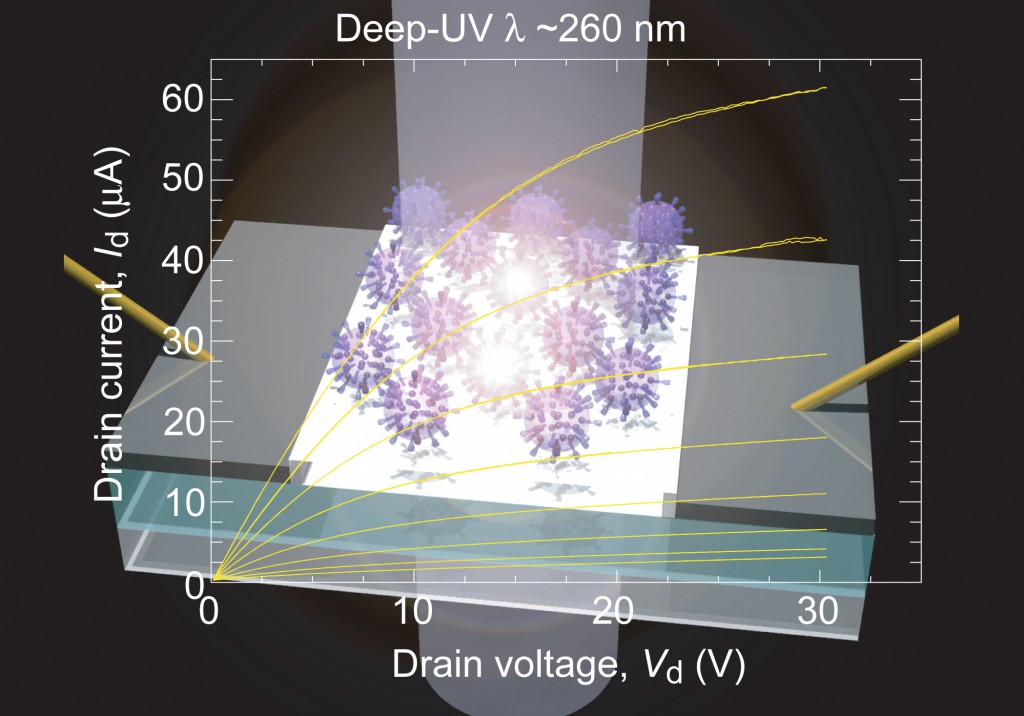Press release
Transparent Transistor that Transmits Deep Ultraviolet – Novel Biosensor –

The research group of Professor Hiromichi Ohta from Research Institute for Electronic Science at Hokkaido University has succeeded in demonstrating the transparent transistor that transmits deep ultraviolet. Currently, a semiconducting Si-based transistor is used as a biosensor. However, since the bandgap of Si is only 1.1 eV, the operation becomes unstable when exposed to deep ultraviolet such as a germicidal lamp while the transistor is operating. The research team worked on the development of a thin film transistor using the oxide semiconductor strontium stannate as the active layer, which has a large bandgap of 4.6 eV. Transistors obtained by optimizing the combination of materials not only show clear transistor characteristics but also transmit deep UV light with a wavelength of 260 nm by 50% or more when there are no gate electrodes. The deep-UV transparent transistor would be expected as a prototype of a novel biosensor that operates even when it is exposed to the deep UV of a germicidal lamp.
Original article
Mian Wei, Lizhikun Gong, Dou-dou Liang, Hai Jun Cho*, and Hiromichi Ohta*, “Fabrication and Operating Mechanism of Deep-UV Transparent Semiconducting SrSnO3-based Thin Film Transistor”, Advanced Electronic Materials 6, 2000100 (2020). (DOI: 10.1002/admi.202000100) (June 15, 2020)
Funding information
This research was supported by Grants-in-Aid for Scientific Research A (17H01314) and Innovative Areas (19H05791) from the JSPS. A part of this work was supported by Dynamic Alliance for Open Innovation Bridging Human, Environment, and Materials, and by the Network Joint Research Center for Materials and Devices.
Contacts
Professor Hiromichi Ohta
Research Institute for Electronic Science,
Hokkaido University
Email: hiromichi.ohta[at]es.hokudai.ac.jp
https://functfilm.es.hokudai.ac.jp/english/

